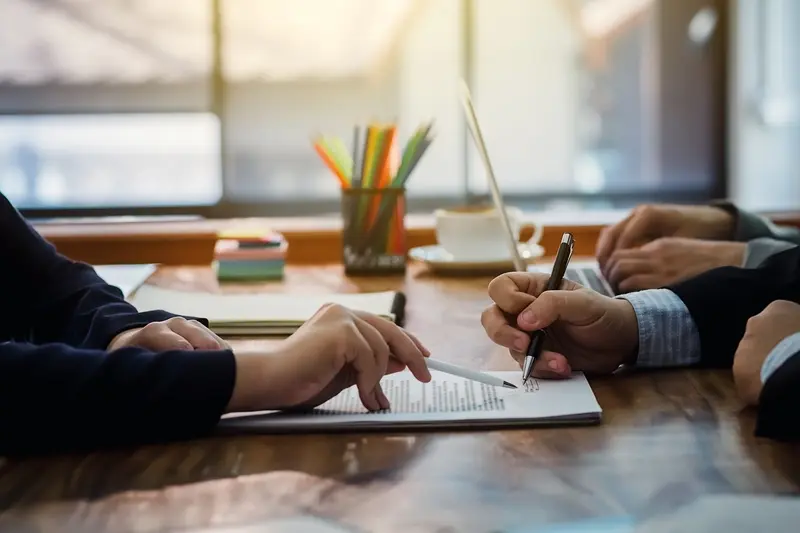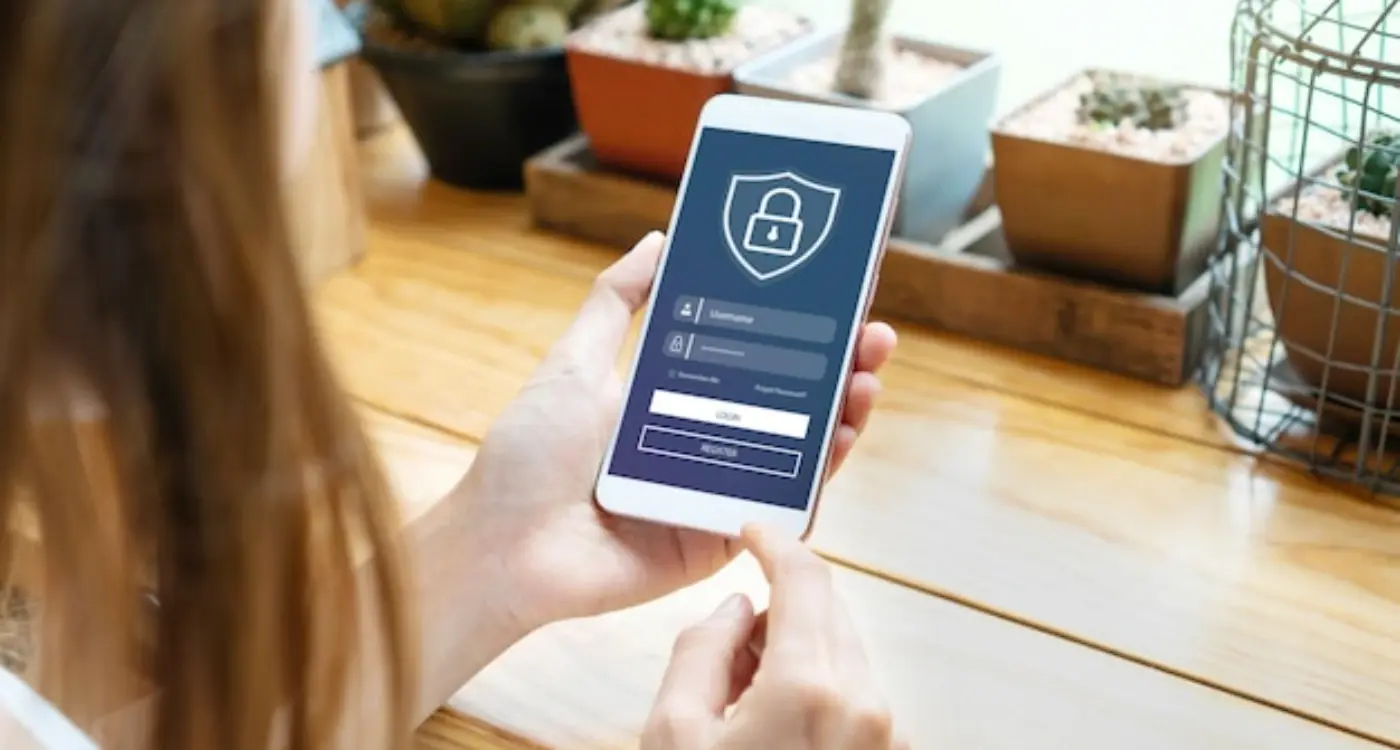Can I Get Sued For Having Similar Features To Another App?
Every mobile app developer faces the same uncomfortable question at some point: could this feature I'm building land me in court? It's a worry that keeps many developers second-guessing themselves, and frankly, it should. The mobile app industry sees hundreds of intellectual property disputes every year, with settlements often reaching millions of pounds. What makes this particularly tricky is that the line between inspiration and infringement isn't always clear—and the consequences of getting it wrong can be devastating for your business.
Building mobile apps means walking through a minefield of existing patents, copyrights, and trademarks. You might think your innovative swipe gesture or unique user interface is completely original, but there's a good chance someone else thought of something similar first. The legal risk isn't just about blatant copying either; even accidentally creating features that resemble existing intellectual property can trigger costly legal action.
The biggest mistake developers make is assuming that if they haven't directly copied code, they're safe from legal trouble
This guide will help you understand what intellectual property means in the context of mobile apps, identify which features commonly cause problems, and most importantly, show you how to protect yourself from legal claims. We'll explore real-world examples of app disputes and break down the practical steps you can take to build confidently without fear of litigation.
What Is Intellectual Property In Mobile Apps
I've been in the mobile app development game for over eight years now, and one thing that catches many developers off guard is just how much intellectual property exists in mobile apps. When most people think about intellectual property, they picture patents for fancy inventions or copyrights for books—but mobile apps are absolutely packed with different types of intellectual property that can land you in hot water if you're not careful.
Intellectual property in mobile apps covers everything from the code that makes your app work to the way it looks and feels. The name of your app, its logo, unique features, and even the specific way users interact with your interface can all be protected by different types of intellectual property law.
The Four Main Types You Need To Know About
- Copyright - Protects your app's code, graphics, music, and written content
- Trademarks - Covers your app name, logo, and distinctive branding elements
- Patents - Protects unique technical features and innovative functionality
- Trade secrets - Covers confidential algorithms and proprietary methods
What makes this tricky is that intellectual property protection happens automatically in many cases—you don't always need to file paperwork for it to exist. The moment you write code or create a design, you've got copyright protection. This means other apps already have these protections in place, whether their owners realise it or not.
Types Of App Features That Can Get You In Legal Trouble
After years of building mobile apps for all kinds of clients, I've seen developers walk into intellectual property minefields without even realising it. Some features are like red flags to lawyers—they're just asking for trouble.
User interface elements cause the most problems. Those fancy animations, unique navigation patterns, and distinctive visual designs aren't just pretty to look at—they're often protected by design patents. Apple's famous "slide to unlock" feature cost Samsung millions in court battles. Button styles, menu layouts, and even the way screens transition can land you in hot water if they're too similar to existing apps.
High-Risk Features to Watch Out For
- Unique gesture controls (pinch to zoom, swipe patterns)
- Distinctive app icons and visual branding
- Novel notification systems or alerts
- Innovative payment or checkout processes
- Custom camera filters or photo editing tools
- Proprietary algorithms for recommendations
Functional features can be just as dangerous. That clever way you've figured out to organise data or that brilliant new search function might already be someone else's patented invention. The tricky part is that these patents aren't always obvious—companies often file broad patents that cover variations of their core ideas.
Before implementing any feature that feels innovative or unique, do a quick patent search or consult with a legal professional. It's much cheaper than defending a lawsuit later.
How Similar Is Too Similar When Building App Features
After years of building apps, I can tell you that the line between inspiration and copying isn't always clear—and that's what makes this topic so tricky. You might think you're being creative, but you could accidentally step into dangerous territory without realising it.
The general rule is that copying the exact way something works, looks, or functions is where you'll run into trouble. But taking the basic idea and making it your own? That's usually fine. Think of it like this: if someone saw your app and immediately thought "this is just like [other app]" then you've probably gone too far.
Warning Signs You've Crossed The Line
- Your interface looks almost identical to another app
- You've copied the exact same user flow or navigation pattern
- Your app's name or icon is confusingly similar to an existing one
- You've replicated a unique feature that makes another app special
- Your colour scheme, fonts, and overall design feel like a direct copy
The key word here is "substantial similarity"—that's what lawyers look for. If your app shares too many specific elements with another app, you might face legal action. Small similarities are normal; wholesale copying is not.
My advice? Always ask yourself: am I solving the same problem in a genuinely different way, or am I just recreating what already exists?
The Difference Between Inspiration And Copying
I've worked on hundreds of mobile apps over the years, and I can tell you that almost every client comes to me with some version of "I want to build something like Instagram but for dogs" or "Think Uber but for haircuts." This is completely normal—and perfectly legal. The line between taking inspiration and copying isn't always clear, but there are some important differences you need to understand.
Taking inspiration means looking at what works well in other apps and adapting those ideas to solve your own unique problem. You might love how TikTok handles video scrolling, so you decide to implement vertical swiping in your recipe app. That's inspiration. Copying means recreating someone else's exact solution, visual design, or unique feature without adding anything new of your own.
The Legal Side of Inspiration
From a legal perspective, you can't protect general ideas or concepts. Nobody owns the idea of "photo sharing" or "food delivery ordering." What gets protected is the specific way these ideas are executed—the unique visual elements, the exact code, or truly innovative features that nobody else has done before.
The difference between inspiration and copying often comes down to whether you're solving the same problem in a similar way, or solving your own problem using techniques that work well elsewhere
The key is being thoughtful about what you're borrowing and why. If you're taking inspiration from successful apps to solve your own users' problems, you're probably fine. If you're recreating someone else's app feature-for-feature just because it works for them, that's when you start entering risky territory for potential intellectual property claims.
Common Legal Risks When Developing Mobile Apps
When building mobile apps, there are several legal risks that can catch developers off guard—and trust me, I've seen plenty of cases where teams wished they'd thought about these earlier. The most obvious risk is patent infringement, where you accidentally use a feature that someone else has already patented. This happens more often than you'd think because software patents can cover surprisingly basic functionality.
Copyright and Design Issues
Copyright infringement is another big one. This isn't just about copying code directly; it can include using similar user interface designs, icon styles, or even the way information is presented on screen. I've worked with clients who've had to redesign entire sections of their apps because they were too close to existing designs.
Data Protection and Privacy Concerns
Then there's the whole area of data protection and privacy laws. Different countries have different rules about how you can collect, store, and use people's personal information. Get this wrong and you're looking at hefty fines and potential lawsuits from users.
Trademark issues can also sneak up on you—using names, logos, or even colour schemes that are too similar to established brands can land you in hot water. The key thing to remember is that legal problems are much easier to prevent than they are to fix after the fact.
How To Protect Yourself From Intellectual Property Claims
Right, let's talk about the practical stuff—how do you actually protect yourself from getting into legal trouble? After working with dozens of app development projects, I can tell you that most intellectual property issues are completely avoidable if you know what you're doing.
The first thing you need to do is conduct proper research before you start building anything. This means checking existing patents, trademarks, and copyrights in your app's market. Yes, it's boring work, but it's much cheaper than dealing with a lawsuit later. You can start with basic searches on patent databases, but for anything serious, get a lawyer involved.
Always document your development process from day one. Keep records of your original ideas, design concepts, and feature development—this evidence could save you if someone claims you copied their work.
Smart Development Practices
Build your features from scratch rather than copying existing solutions. If you're inspired by another app's approach, think about how you can solve the same problem differently. This isn't just about avoiding legal issues—it often leads to better, more innovative solutions.
- Keep detailed development logs and version histories
- Use original code and avoid copying from other projects
- Get legal advice before launching if you're unsure about any features
- Consider getting your own intellectual property protection
- Work with experienced developers who understand these risks
The key is being proactive rather than reactive. Prevention is always better than cure, especially when legal fees are involved.
Real Examples Of App Legal Disputes And What We Can Learn
I've watched the mobile app industry evolve over the years, and let me tell you—the legal battles have been quite something to witness. Some of these cases have shaped how we think about app development today, and they're worth understanding if you're building your own app.
The Big Cases That Changed Everything
Apple and Samsung went head-to-head in one of the most famous mobile disputes. Apple claimed Samsung copied their iPhone's design and interface elements like the "bounce-back" scrolling effect. The case dragged on for years and cost both companies millions in legal fees. What did we learn? Even basic interface behaviours can be protected, so be careful about copying exactly how another app works.
Then there's the Instagram Stories situation. Snapchat created the "Stories" format—you know, those photos and videos that disappear after 24 hours. Instagram launched their own version that worked almost identically. Snapchat wasn't happy, but they couldn't do much legally because the concept wasn't protected well enough. This shows us that being first doesn't always mean you're protected.
What These Cases Teach Us
The most important lesson? Document everything during development. Keep records of your creative process, sketches, and decision-making. If someone challenges your app later, you'll need proof that you developed your features independently. Also, don't copy the exact look and feel of another app—even if the underlying idea is similar, make sure your implementation is genuinely different.
- Always research existing apps before finalising your design
- Keep detailed records of your development process
- Focus on creating unique user experiences rather than copying
- Consider getting legal advice for complex features
- File for protection of your own unique innovations
Conclusion
I've been working with mobile app clients for years now, and the question about intellectual property and legal risk comes up in almost every project briefing. The good news? Most app developers worry far more than they need to about getting sued for similar features.
Building a mobile app with features that exist elsewhere isn't automatically going to land you in court. Apps share common features all the time—login screens, search bars, messaging systems. What matters is how you implement these features and whether you're directly copying someone else's specific design, code, or unique innovations.
The key is understanding the difference between inspiration and copying. Drawing inspiration from successful apps is normal and expected in the industry. Copying their exact visual design, stealing their code, or replicating their unique proprietary features is where you run into trouble.
Your best protection against intellectual property claims is doing your homework before you start development. Research existing apps in your space, document your design decisions, and when in doubt, consult with a lawyer who specialises in technology law. It's much cheaper to get advice upfront than to deal with legal issues later.
Most importantly, focus on creating something that adds genuine value for your users rather than simply copying what already exists. That approach will keep you out of legal trouble and give you a much better chance of building something people actually want to use.
Share this
Subscribe To Our Learning Centre
You May Also Like
These Related Guides

Can I Copy Another App's Terms Of Service For My Own?

When Should You Hire a Regulatory Expert for Your App?



